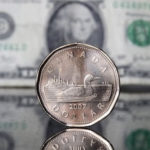Gold futures were little changed this week, as Iraq maintained some support, while the the US economy posted some mixed results. The US mark Independence Day next week, meaning trade will be muted, with many exchanges closing at midday on Thursday, and not working on Friday, July 4.
Gold futures for delivery in August closed for $1 320.0 per troy ounce on Friday on the COMEX in New York, recording a daily gain of 0.23% and a slight weekly increase of about 0.2%. Weekly high and low stood at, respectively, $1 326.6 per ounce on Tuesday, a two-month high, and $1 305.4 per troy ounce on Wednesday. Last week the contract gained about more than 3%.
Meanwhile, silver contracts for July closed at $20.949 per troy ounce, adding 0.15% for the session, and logging a weekly gain of 0.6%. Weekly high and low were at, respectively, $21.205 on Friday, which was also a three-month peak, and $20.735 on Monday. Last week silver added more than 6%.
“There are very mixed views about the economy, which are reflecting on the dollar and thus helping gold,” Blake Robben, senior market strategist at Archer Financial Services in Chicago, said for Bloomberg.
US reports
Several readings on the US economy were reported this week. Jobless claims were slightly worse than a week earlier, while personal spending and income for May were slightly better than before, at 0.2% and 0.4% growth, respectively. Personal income and spending are leading indicators for consumer spending, which generates nearly 80% of US GDP.
Previously, the US posted some worse-than-expected data on Wednesday. Q1 GDP growth was far below the expected contraction of 1.8% at -2.9%, which is also the worst quarterly growth since Q1 of 2009. Durable goods orders for May also scored below par, though the negative sentiment was largely already priced. Also, Markit posted its preliminary reading on US services PMI for June, for a standing well above expectations at 61.2. A reading of 50 or higher means expansion, and vice versa. The greater the distance from 50, the more sizable an expansion or contraction.
The services sector accounts for about 80% of US GDP.
Stocks, dollar
US stocks reflected the mixed results posted this week. S&P 500 added about 0.1% this week, Dow 30 logged about 0.4% weekly loss, while Nasdaq 100 added about 1% this week for an all-time-high close of 3844.44 on Friday. Dow Jones Euro Stoxx 50 closed the week about 2.5% lower.
Meanwhile, assets at the SPDR Gold Trust – the largest gold-backed exchange-traded fund, were unchanged on Friday at 785.02 tons, after adding some 3 tons earlier. The fund lost more than 4 tons last week, and is orbiting multi-year lows amid a recovering US economy.
The US Dollar Index, which measure the greenback’s performance against six other major currencies, was pressured by the mixed economic data this week. The gauge dropped about 0.5% this week, and was at 80.09 as Friday’s session closed.
Meanwhile, the euro, the dollar’s main competitor, has gained more than 0.4% against the dollar this week, closing at 1.3650 EUR/USD.
Iraq
Iraqi authorities are acquiring fighter jets from Russia and Belarus, the government reported, in a bid to bolster the military against the Sunni rebels, led by the extremist organization ISIS (Islamic State in Iraq and the Levant). “God willing within one week this force will be effective and will destroy the terrorists’ dens,” he said, cited by the BBC.
Earlier, Prime Minister Nouri Maliki dismissed a widely discussed and promoted idea of a government of national unity, including more Sunni and Kurdish representation. Such calls represented a “coup against the constitution and an attempt to end the democratic experience”, he warned, the BBC reported.
Previously, insurgents took control of the country’s largest oil refinery, which supplies about a third of Iraq’s fuel demand. Elsewhere, militants seized all official border crossings in Syria and Jordan. The Jordanian army has been on full alert, protecting its borders against incursions, the Jordanian military said.
The Iraqi government insisted insurgents do not threaten Baghdad, nor the southern oilfields, which account for more than 75% of Iraqi oil output. Furthermore, the Iraqi oil minister said production and exports will actually increase over the next month.
Iraq is OPEC’s second-top oil producer, and exports some 3 million barrels per day from its main southern terminal at Basra.
“Markets are beginning to position for the likelihood that insurgents will be contained from any further incursions to the south, allowing oil exports to be maintained,” Ric Spooner, chief strategist at CMC Markets in Sydney, said in a note today, cited by Bloomberg.
Next week
The US will post several key readings next week. Pending home sales for May will be revealed on Monday, and analysts expect a 0.8% monthly gain, after 0.4% were logged in April. The real estate industry accounts for about 13% of US GDP.
ISMs final reading on manufacturing PMI for June will be released on Tuesday, with forecasts of accelerating growth for the factory sector of the US, before a separate report on May factory orders on Wednesday, which are also projected to have grown. ISM will post its non-manufacturing PMI for June on Thursday, and experts suggest accelerating growth in the services sector as well.
Thursday will feature the key report on employment for June. The unemployment rate is set for an unchanged 6.3%, while nonfarm payrolls have probably added 210 000 – 213 000, after a 217 000 figure for May. Payrolls are a leading indicator for the overall health of the economy.
The Eurozone will post several key reports next week. Manufacturing PMI for June and unemployment rate for May will be posted on Tuesday, with expectations of little change in both. Thursday will see services PMI for June and retail sales for May, as well as a key European Central Bank (ECB) decision on the benchmark lending rate and deposit rates. The ECB cut both rates last time, for a 0.15% central lending rate and -0.10% deposit rate, which taxes commercial banks if they keep their money out of circulation.





